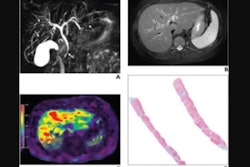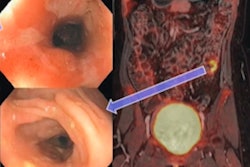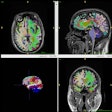MR elastography (MRE) reveals that women more prone to left ventricular (LV) shear stiffness in the heart as they age, researchers have reported.
The findings are good news for patient care, as MRE is a noninvasive way of measuring the condition, a team led by Arvin Arani, PhD, of the Mayo Clinic in Rochester, MN, reported. Study results were published May 23 in Radiology: Cardiothoracic Imaging.
"Elevated myocardial stiffness causes poor function and restrictive diastolic filling that can lead to heart failure, even with a normal left ventricular ejection fraction (LVEF)," the group noted. However, the invasiveness of existing techniques for measuring myocardial stiffness … hampers the widespread application of myocardial stiffness as a practical clinical biomarker and makes measurements in healthy individuals challenging."
Arani's team assessed MRE's ability to characterize LV shear stiffness via a study that included 109 healthy participants (57 women, 52 men, mean age, 40 years) who underwent a five-minute MRE acquisition that was added to a standard MRI exam between November 2018 and September 2019. The researchers then assessed any associations between cardiac MRI/MRE characteristics with participant age and sex.
The investigators found the following:
- Myocardial shear stiffness increased with age in the study's women participants (p = 0.009) but not in the men (p = 0.38).
- LVEF increased with age in the study's women participants (p = 0.005), although LV end-systolic volume (LVESV) decreased with age in female volunteers (p = 0.003).
- Myocardial shear stiffness did not correlate significantly with LVEF, LV stroke volume, body mass index, or any MRI strain metrics but showed significant correlations with LV end-diastolic volume/body surface area.
Why do women experience this phenomenon? The authors suggested a number of factors may be in play, including the onset of menopause.
"Although this was not the objective of the current study, studying myocardial shear stiffness during the menopausal transitional period could help identify cardiac MRE as a valuable early biomarker for heart failure," they wrote.
More research is needed, according to Arani and colleagues.
"A better understanding of these sex-related differences and their association with aging may help reduce sex disparities in individuals with heart failure," they concluded.
The complete study can be found here.


.fFmgij6Hin.png?auto=compress%2Cformat&fit=crop&h=100&q=70&w=100)





.fFmgij6Hin.png?auto=compress%2Cformat&fit=crop&h=167&q=70&w=250)











